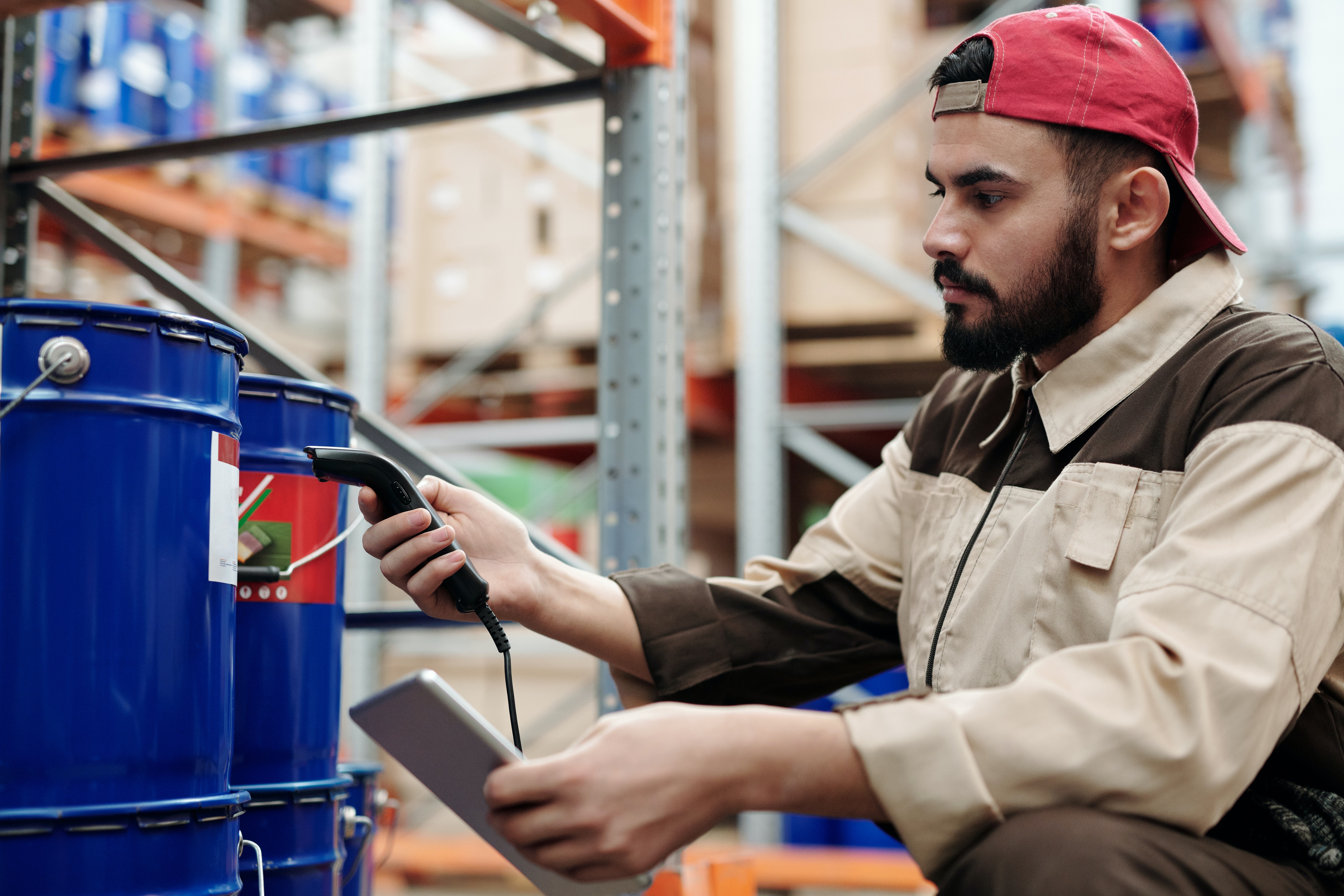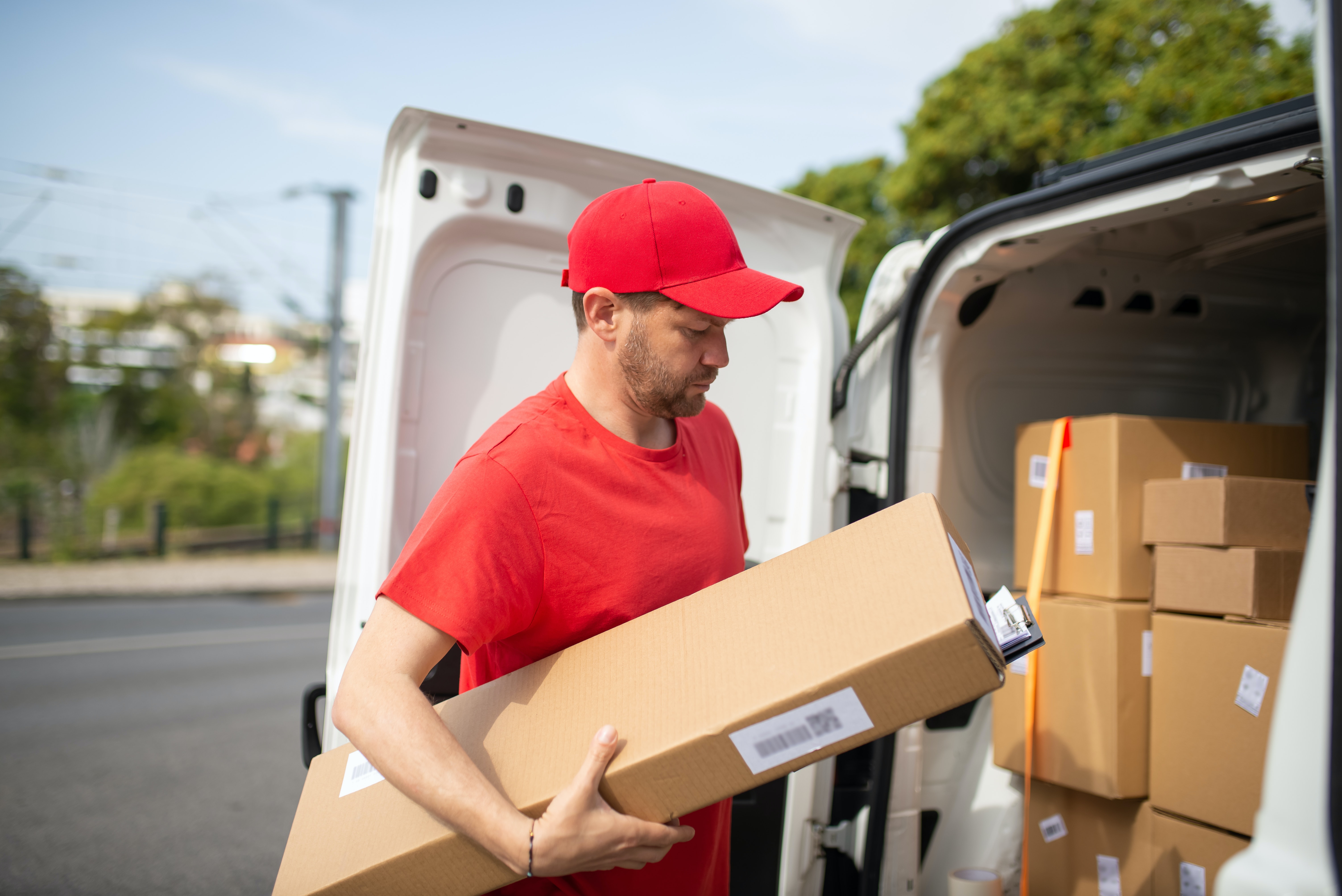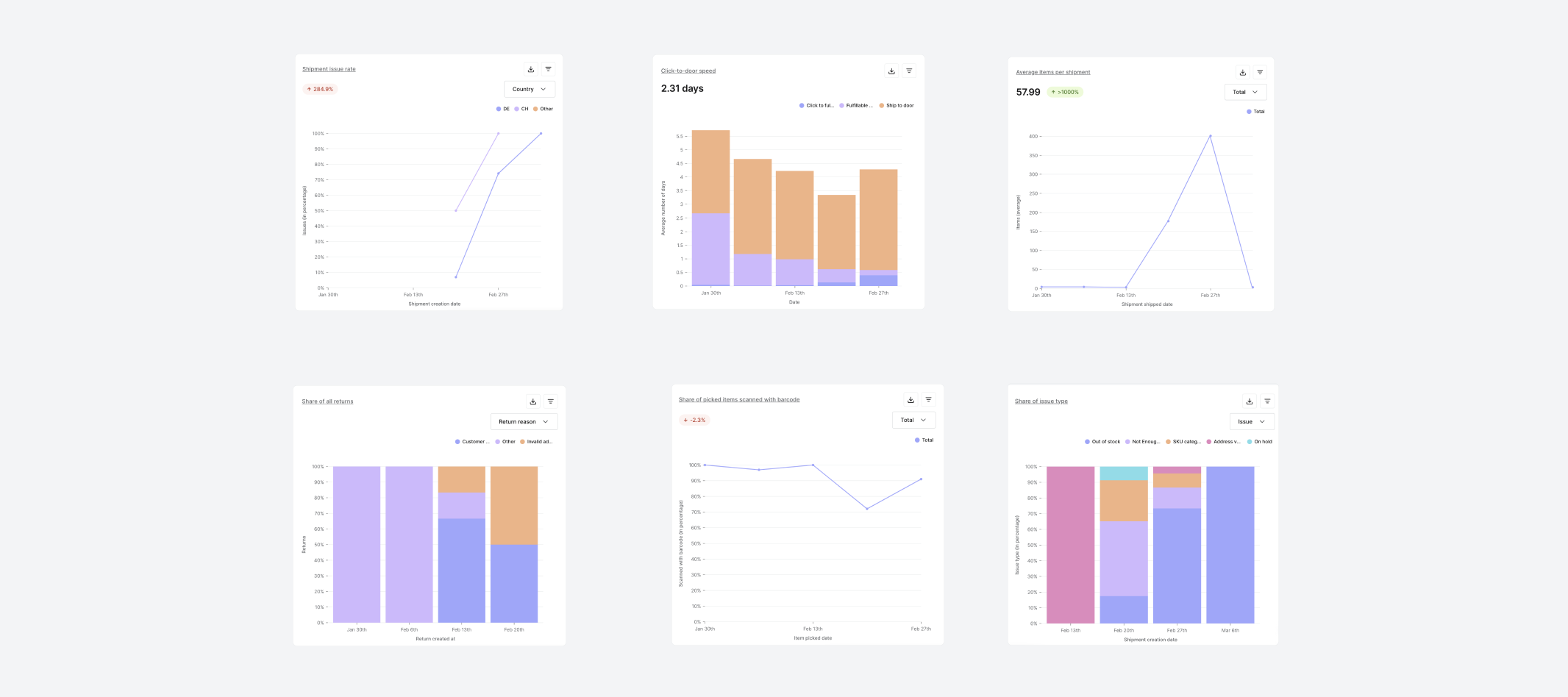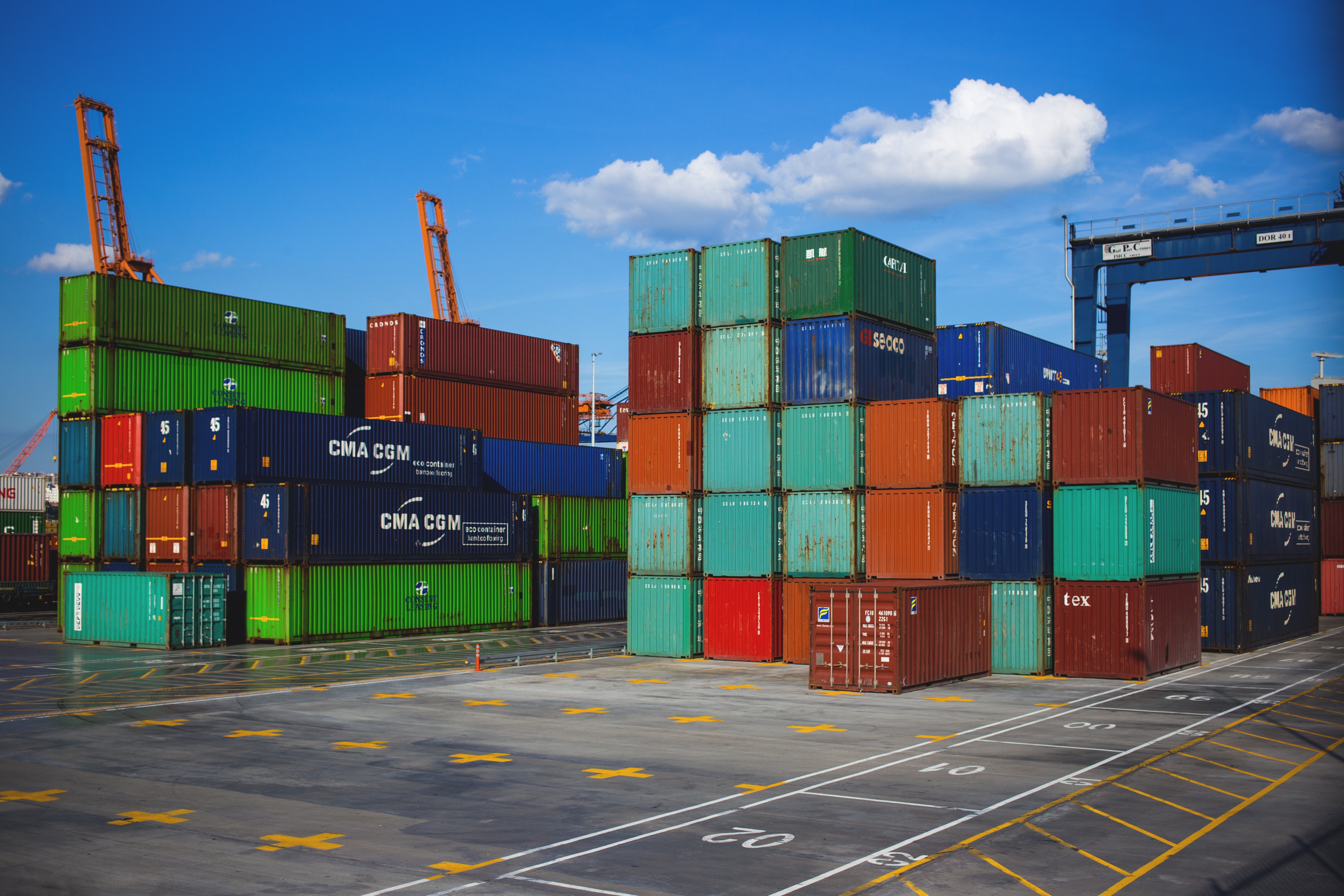Guide to logistics: what does it mean and how does it work?
Find out what logistics is all about. Why is it important? What does a 3PL partner do? Discover more here.
.png)
E-commerce is booming. Last year, online retail sales totaled $4.9 trillion and this figure is predicted to grow by 50% over the next four years. This presents a huge opportunity for retailers - but only if they can make sure their products reach consumers in a reliable, secure, and cost-effective manner. And for that, logistics is key.
What is the definition of logistics? Understanding logistics in e-commerce
The term logistics relates to the overall management of resources - including their acquisition, storage, and transportation.
In the e-commerce space, logistics is already of huge importance - with its value constantly growing. Last year, the global e-commerce logistics market was worth more than €441 billion. With demand for goods and services purchased through e-commerce channels set to increase further, the market is expected to continue its expansion.
There are various logistics components relating to the e-commerce market, including:
- Warehousing
- Inventory management
- Order management
- Shipping
- Returns management
In this article we will address the following questions:
- Why is logistics important?
- What does 3PL mean?
- What is the difference between 3PL and 4PL logistics?
- What is fulfillment and how does it work?
- What does a logistics manager do?
- What is the difference between logistics and supply chain management?
- What is warehouse management?
- What’s the difference between inbound and outbound logistics?
- What is reverse logistics?
- What impact has Amazon had on e-commerce logistics?
- What are some logistics best practices to follow?
.png)
Why is logistics important in e-commerce business?
Although logistics has always played an important role for some businesses, it is now fundamental to the global economy. The internet has made it easier than ever for consumers to purchase whatever they need at the click of a button (even before Covid-related lockdowns tipped the scales even further in favor of online shopping). Globalization, meanwhile, has meant that goods are regularly shipped across entire continents.
It is hardly surprising that the number of packages traveling around the world has been recorded at a staggering scale. In the US alone, 41% of consumers receive between one and two packages each week just from Amazon. With logistics impacting so many industries outside of e-commerce too, it has become an essential part of many company business strategies.
What does 3PL mean? And what is a 3PL partner?
Third-party logistics, often abbreviated to 3PL, is the outsourcing of logistics services to a third-party provider that operates externally to a particular retailer. Although some companies manage their own logistics services, they are increasingly working with 3PL partners.
E-commerce logistics has become more complex, with higher numbers of shipments being made each day and market shifts occurring without warning. The expertise offered by a dedicated 3PL provider can therefore be a major competitive advantage. That is part of the reason why 90% of Fortune 500 companies choose to work with a 3PL firm.
What does working with a 3PL partner involve?
Although the exact process will vary depending on which 3PL provider you decide to work with, it will typically begin with a 3PL provider receiving your stock from the supplier along with a complete inventory list of Stock Keeping Units (SKUs). After an order has been placed on your e-commerce site, it is forwarded to the 3PL provider. This provider is then responsible for the management of the goods at the warehouse, from picking through to packaging, shipping, and tracking.
Of course, working with a 3PL provider does not mean that logistics all of a sudden becomes simple. First of all, companies must choose which 3PL firm to work with. This decision is hugely important and ultimately defines the relationship that retailers will have with their customers. Choosing a long-term 3PL partner that can scale to meet your needs is fundamental to success.
Interested in working with Hive as a 3PL partner? Find out about our offering here.
3PL logistics vs 4PL: logistics companies explained
While 3PL providers may be the type of logistics partner that is spoken of most often - it is not the only one. In fact, there are second-party logistics (2PL) providers that simply collect packages from a company’s own warehouse before transporting them to the customer. And even fourth-party logistics (4PL) firms.
A 4PL provider is actually responsible for managing the 3PL firms that will be directly involved in the fulfillment of e-commerce orders. It has a total overview of a company’s logistics process - but is not actually involved in the movement of goods.
While a 3PL firm owns its own warehouse and the associated equipment needed to get products from origin to destination, a 4PL provider does not own any assets. It simply provides management expertise and organizational analysis to help businesses with their supply chain. Like 3PL, the 4PL market is growing too and is expected to reach $84.43 billion by 2026.
There is no straightforward answer to whether a business is better off working with a 3PL or 4PL firm. While the latter can deliver significant efficiency gains, they do require firms to hand over control of their supply chain - which some companies may not be comfortable with.
If you are a larger operator experiencing rapid growth, the oversight that a 4PL provider gives you may be beneficial, but smaller players will probably find that a 3PL provider delivers more than enough advantages.
Read more about the difference between 3PL and 4PL companies here.

Fulfillment 101: what is fulfillment and how does it work?
If you work in the e-commerce space, you will understand the numerous important and complex processes that must all come together in order to successfully fulfill an order. Within logistics, fulfillment essentially describes the way that customer orders are picked and packed in the fulfillment center.
What is ‘picking and packing’?
One of the most important parts of fulfillment is the picking and packing process. This is when products are received at a warehouse, ‘picked’ for storage, and then ‘packed’ for distribution. Picking involves choosing the right product, in the correct quantity, and recording it in the inventory list for the retailer and logistics partner. Packing, on the other hand, refers to the boxing, labeling, and documentation of goods prior to shipping.
Collectively, fulfillment is dependent on all the logistics personnel that take an e-commerce order and makes sure that the customer receives it. And one of the individuals that is most important to ensuring fulfillment goes to plan is the logistics manager.
Looking for support with fulfillment? See if Hive can help.

What does a logistics manager do?
A logistics manager is tasked with overseeing and coordinating the procurement, storage, and transport of goods. They are ultimately responsible for ensuring that an e-commerce order ends up in the customers’ hands. In the US, there are over 30,000 logistics managers working across various supply chains - highlighting the importance of this role.
Although a logistics manager will work with many other individuals conducting similar tasks related to fulfillment, a logistics manager operates at a macro level. Rather than physically moving packages or notifying warehouse managers, logistics managers negotiate contracts, monitor and analyze overall performance, and plan transportation routes.
What is the difference between logistics and supply chain management?
Although logistics and supply chain management have many similarities, they are subtly different. Logistics is primarily concerned with the movement of goods, while supply chain management is more complex.
Supply chain management encompasses a broader range of processes, all the way back to the sourcing and purchasing of the raw materials needed to create a particular product. Although the terms, “logistics” and “supply chain management” are sometimes used interchangeably, in reality, logistics is just one function acting as part of supply chain management.
Find out more about supply chain management here.
Warehouse management
Within the logistics process, businesses will invariably need somewhere to store their products. Given the scale of e-commerce deliveries today, this storage facility may need to be of a substantial size. But simply sourcing a large enough warehouse to store all of a company’s products is not enough to ensure a smooth logistics process.
Businesses also need to oversee the effective use of space, organize inventories, and integrate processes - all while keeping costs down. This is when warehouse management becomes important. Warehouse management involves the effective running of day-to-day warehouse operations.
Optimizing a company’s warehouse (or multiple warehouses) means overseeing the inbound and outbound transportation of goods. Successful warehouse management is data-driven so decisions are underpinned by analytic insights, not best guesses.
Warehouse management should also be flexible so e-commerce firms can adapt to consumer or market shifts. It must be capable of constant evolution - incorporating the latest digital tools. One such tool is a warehouse management system (WMS), which is currently used by around 83% of all warehousing and logistics providers in the US.
A WMS leverages real-time insights so logistics providers can gain better visibility into their inventory. Productivity can be monitored so bottlenecks are identified and sales forecasts can be used to help businesses gauge revenue, profitability, and growth. Plus, the fact that most WMS software is cloud-based means that it is easily scalable so, should a logistics firm start to expand, its WMS can grow alongside it.
.png)
Inbound and outbound logistics: what is the difference?
Within the supply chain, logistics can broadly be split into two distinct processes: inbound logistics and outbound logistics. At the beginning of the supply chain, inbound logistics covers the sourcing of materials, as well as their storage, handling, and transportation between storage sites.
Conversely, outbound logistics describes the processes leading up to the delivery of goods to the end customer, such as the collection, maintenance, and last mile. Supply chain management concerns the entire network, spanning material sourcing, manufacture, storage, and delivery. It involves internal processes and collaboration with external partners. Supply chain management covers every touchpoint of a product’s life cycle - both inbound and outbound logistics.
Reverse logistics
Although logistics is traditionally viewed as a linear process where goods move from manufacturer to retailer and on to the consumer, there are times when this direction of travel is reversed. Any time when goods move backward to a previous stage of the supply chain, reverse logistics is required.
Reverse logistics is employed when customers return an item, if retailers send a product back to the manufacturer, or when deliveries fail. The growth of e-commerce has seen consumer returns increase markedly, which has necessitated a greater focus on reverse logistics. In fact, 30% of all products ordered online are returned.
Another area of reverse logistics that is of increasing importance is the refurbishment and recycling of goods within the supply chain. With sustainability being prioritized by many businesses, reverse logistics is essential to creating a circular economy. This is where goods are sold, used, and repurposed, moving backward and forwards through the supply chain.

The Amazon effect: logistics transformed
Perhaps the single biggest factor affecting e-commerce logistics in the 21st century is the rise of Amazon. From a small online marketplace selling books out of Jeff Bezos’ garage, Amazon has become an online juggernaut. The company’s average sales revenue is $1.29 billion - each day.
Although Amazon has played a key role in popularizing online shopping, it has arguably had an even greater impact on logistics. The launch of Amazon Prime in 2005 made next-day delivery a possibility and expectation for consumers - changing e-commerce forever. Customers began to expect deliveries faster and cheaper than before - with retailers and logistics firms struggling to keep up.
The way that orders are managed and fulfilled has also changed. Consumers expect to be updated regularly on the logistics process. Amazon tells customers when their order is dispatched, roughly what time it will arrive, and lets them send messages to delivery drivers while packages are in transit.
The technology, speed, and affordability of e-commerce logistics have changed significantly due to Amazon. And with the online retailer now offering same-day delivery on certain products, the pressure on logistics firms is only likely to increase.
The logistics best practices to follow
Logistics is a key part of supply chain management - and it seems to be getting more and more challenging every day. As an e-commerce operator, effective logistics can ultimately determine whether a business is a success or a failure. It can impact productivity, profitability, and customer loyalty.
Some best practices for e-commerce logistics include:
- Choose your 3PL (or 4PL) provider carefully and make sure its business values align with your own.
- Recruit well. Find the best talent to fill your vacancies, including logistics managers, data scientists, delivery drivers, and other roles within the supply chain.
- Use technology to optimize your operations - whether it is a WMS or a data analytics tool.
- Create a strategy for continual improvement, monitoring performance, and identifying challenges.
- Focus on sustainability. A logistics process that is environmentally responsible is not just good for the planet - research from PwC suggests it is valued by consumers as well.
- Do not forget about goods traveling the other way. Reverse logistics is essential too!
Modern-day logistics may come with challenges for e-commerce firms - but they are not insurmountable. With the right partner, it is possible to streamline your supply chain so your inventory is optimized, your orders are on time, and your customers are satisfied.
At Hive, we offer seamless integration with your shop software, a fulfillment center to manage your stock, a sustainable packing process, and access to last-mile carriers you can trust. Our all-in-one solution helps you deliver on all your logistics goals.









.png)
.png)
.png)
.png)
.png)


.png)
.png)

.png)
.png)


